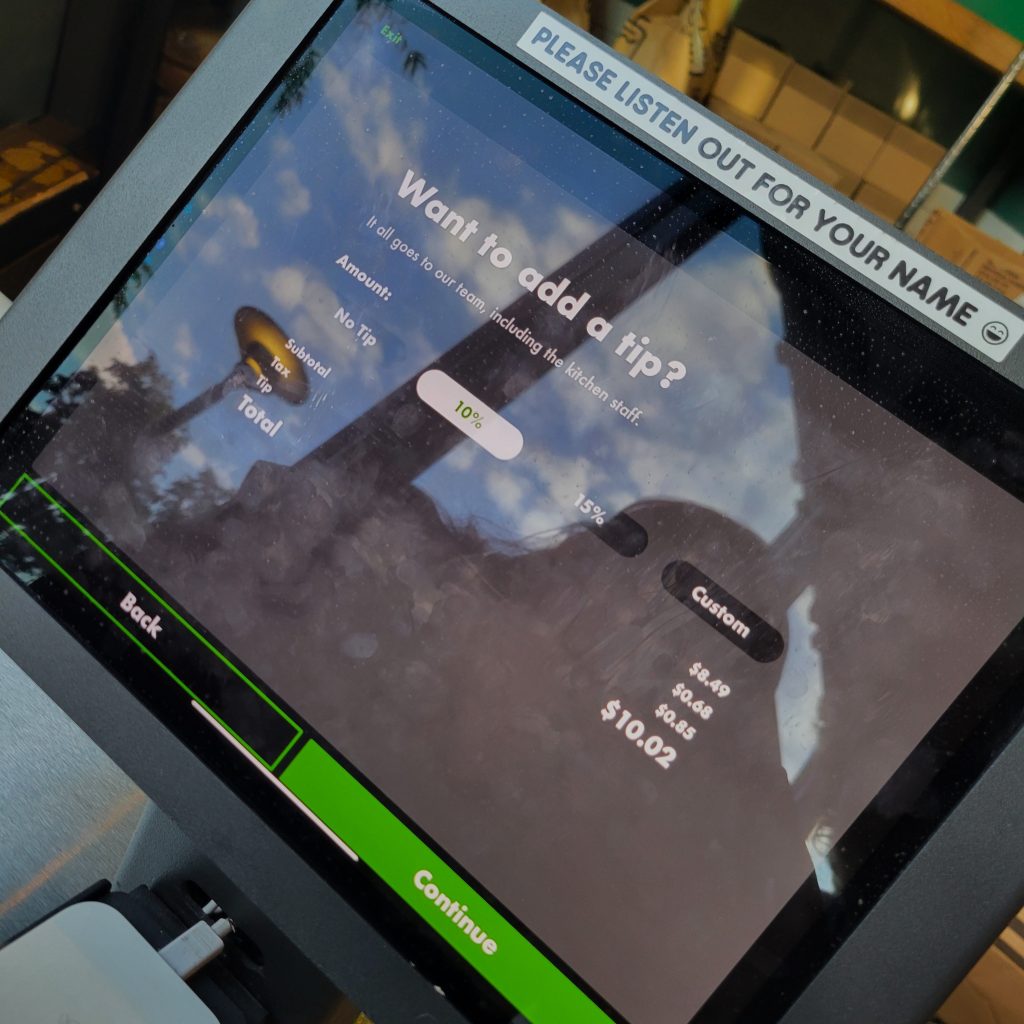
America can not seem to avoid this recently controversial question, “Add a tip?”
Whether you are out for dinner, or at the bar having a drink with some friends, you probably do not think twice about writing in the standard 20 percent on the tip line for your server. Perhaps you are exiting an Uber and give the driver a small cash tip. But now, whether you are at a small coffee shop, or even a local brewery picking up a six-pack, you are inevitably hearing the silent movements of the cashier rotating their tablet that has one question, “Add a tip?”
What caused this to tip over the edge and into a national controversy? When did we go from casually tipping 20 percent to the waiter paying their way through college, to being asked if we want to add a 20 percent tip at fast food restaurants?
There is no doubt that the aftermath of the pandemic, the convenience of modern technology, and social pressure is causing America to experience a perfect “tip-flation” storm.
Think about it. During the Covid lockdown, after essential workers were allowed to return to work, we started offering tips to workers that we would never tip. For the ones we did, we would give more than usual to support them.
The pandemic left, but excessive tipping continues to overstay its welcome.
Partner our post-covid tipping habits with the technology around how we pay for goods and services, all you need to do is pivot the screen, and now the social pressure kicks in.
And that social pressure is cripplingly intense. According to the National Bureau of Economic Research, over 60 percent of Uber and Lyft passengers do not tip their drivers. That is because the tip prompt appears after you have already reached your destination. Even if the riders see the prompt, they will give 10 percent at most since Uber and Lyft’s software systems do not badger you with a tip prompt before paying for the ride.
But, if you have a software system that is nudging consumers, cornering them into making a decision, it makes giving a tip feel like a requirement, rather than an act of kindness. Even if you have been successfully nudged into “giving” a tip, tech companies like Square, one of the largest electronic payment software companies, are taking a cut of that tip. You are essentially giving two tips at once, one to the employee, and one to the software company who did nothing but play the middleman in the transaction.
However, a 2023 Bankrate survey shows that the excessive gratuities might be at a tipping point. According to the survey, approximately 66 percent of Americans felt a negative view towards tipping. Roughly 30 percent of respondents felt that tipping was “out of control,” due to the increasing number of businesses encouraging customers to provide a tip before payment. Finally, 41 percent of patrons believed businesses should pay employees more rather than have them rely on tips.
Let us say that “tip-flation” suddenly disappeared overnight, that does not mean prices are going to decrease. If tipping went away entirely, restaurants and other businesses would need to compensate for their increased payroll. Whether that is by adding convenience fees or raising prices, the consumer will eventually end up paying more.
I have worked in enough restaurants to know that the extra expense businesses find themselves incurring, is always turned over to the consumer. If we do not define the type of worker who deserves a tip for their service, we will continue to pay more than we should.


